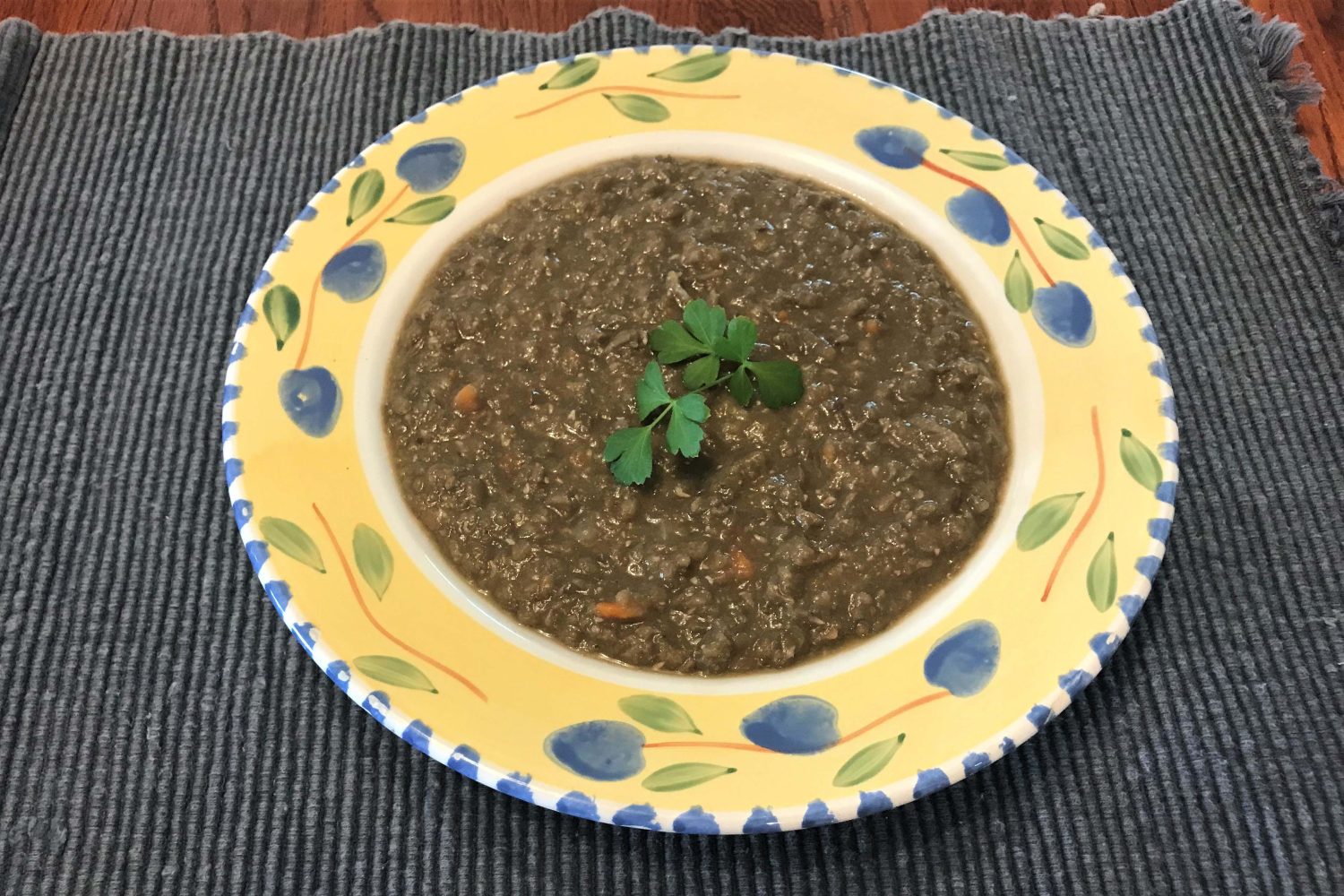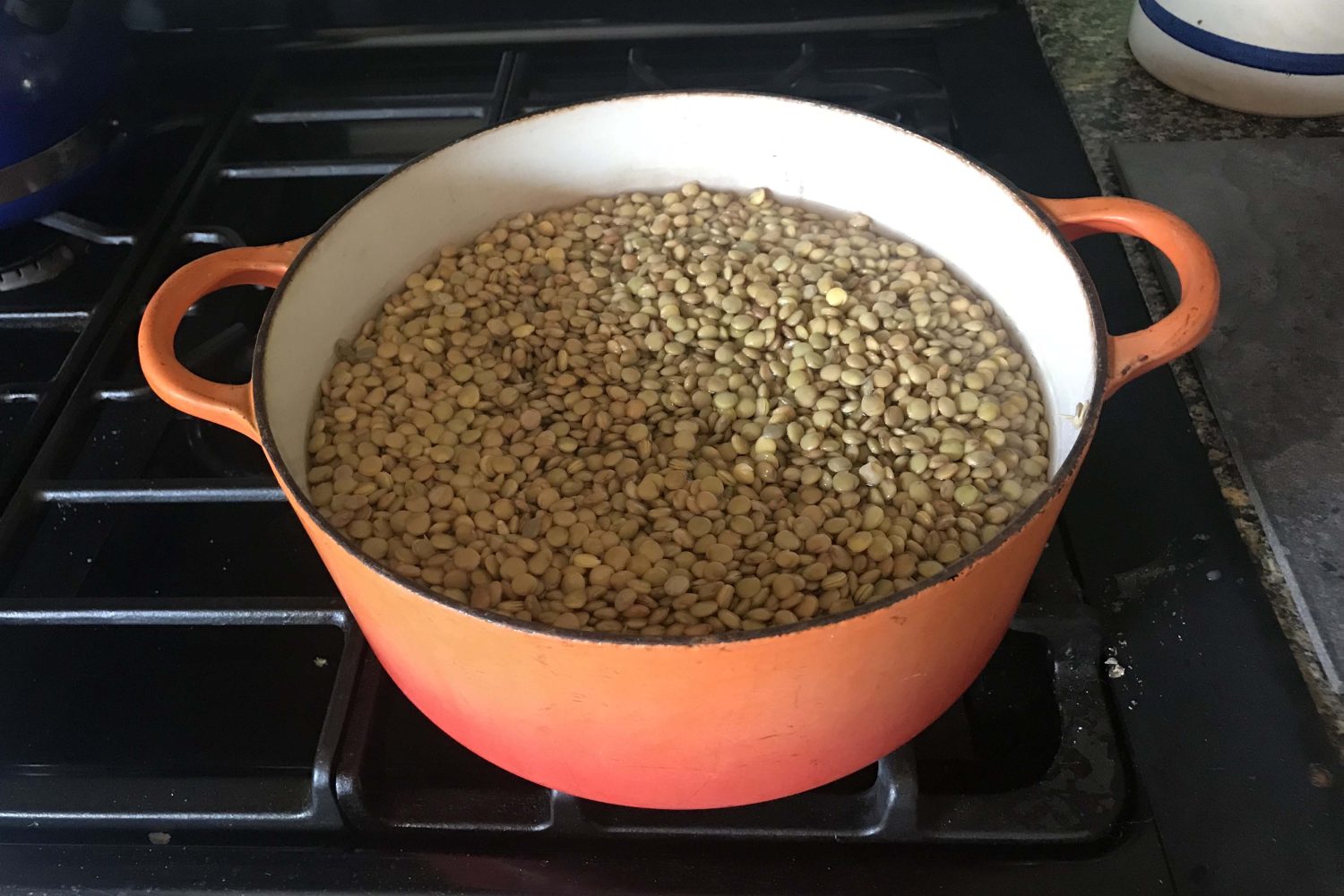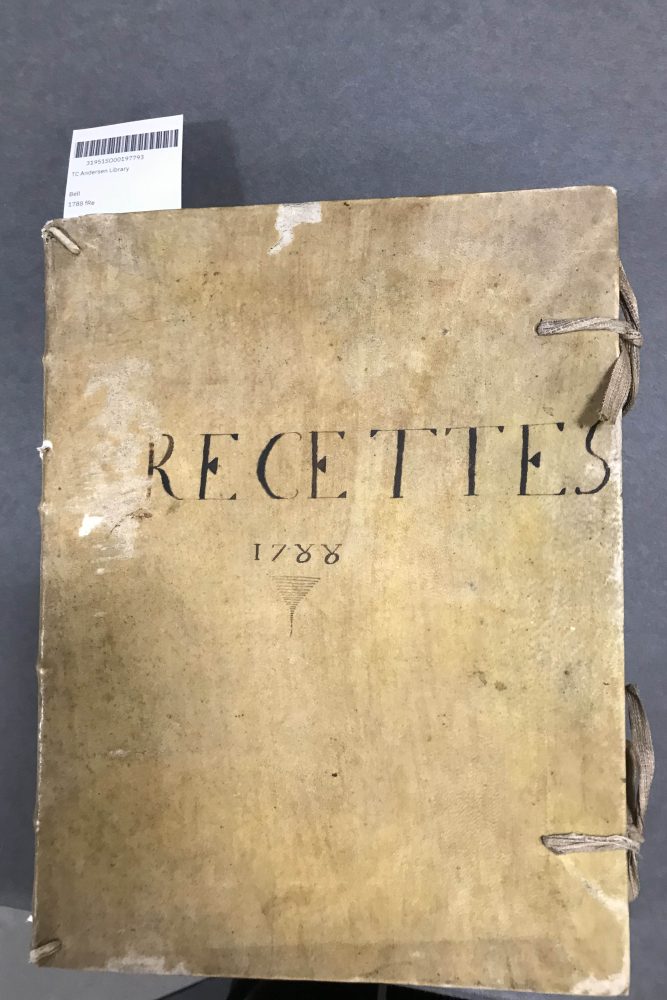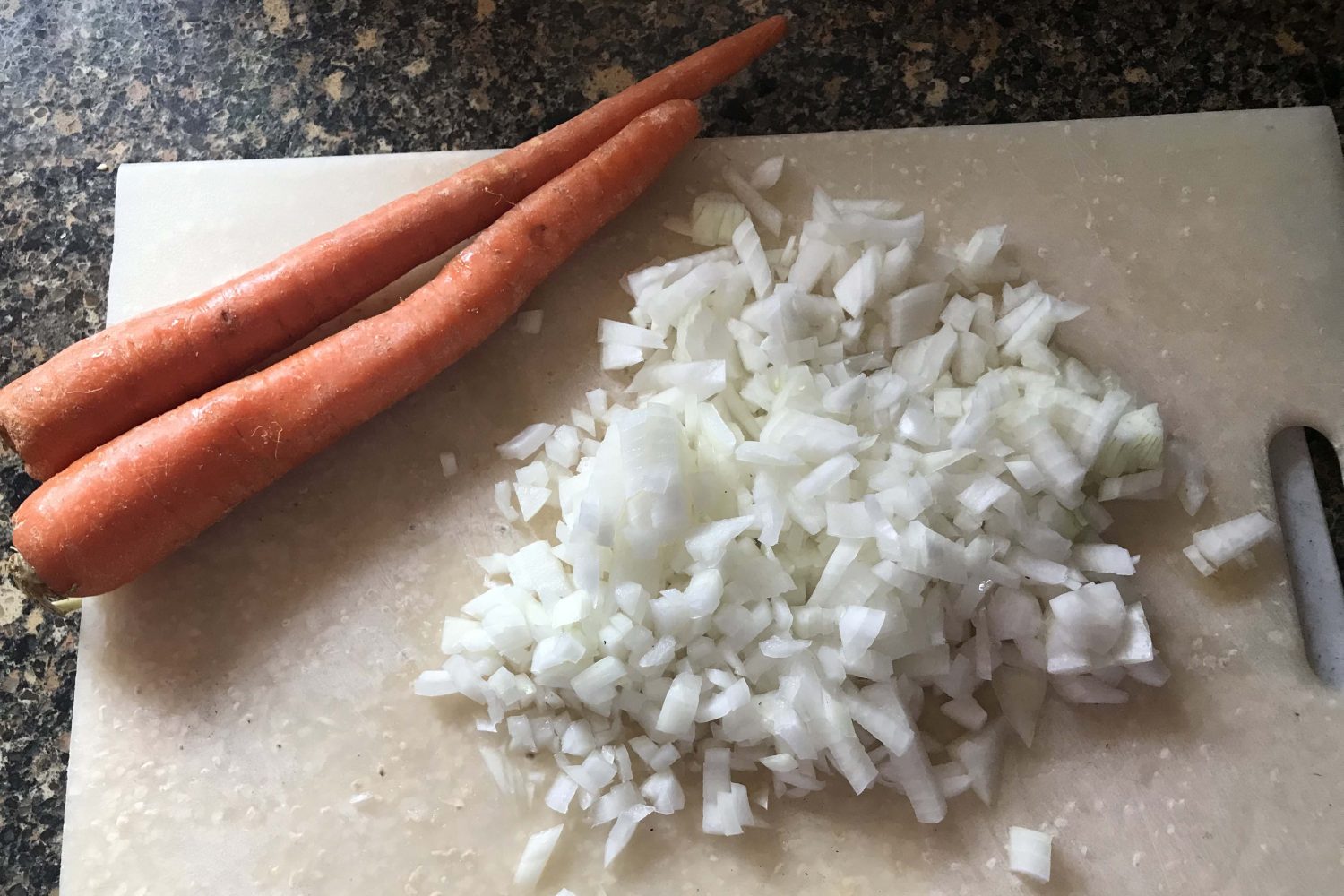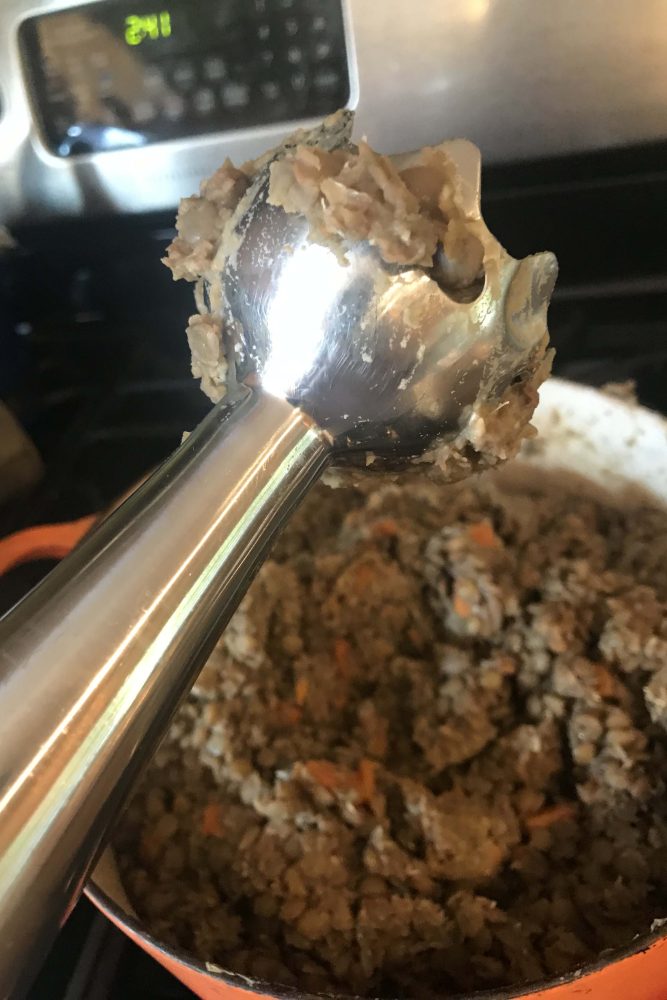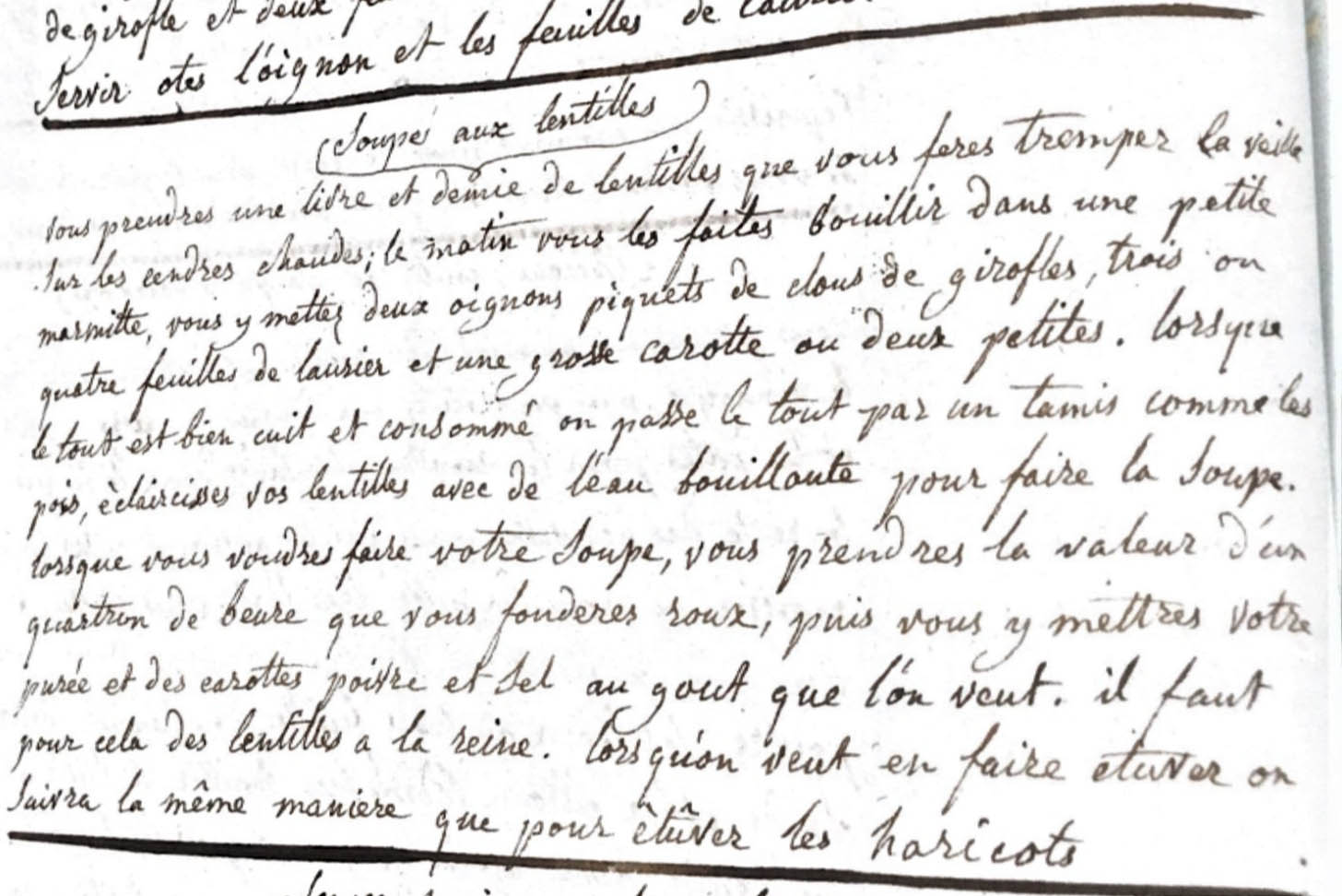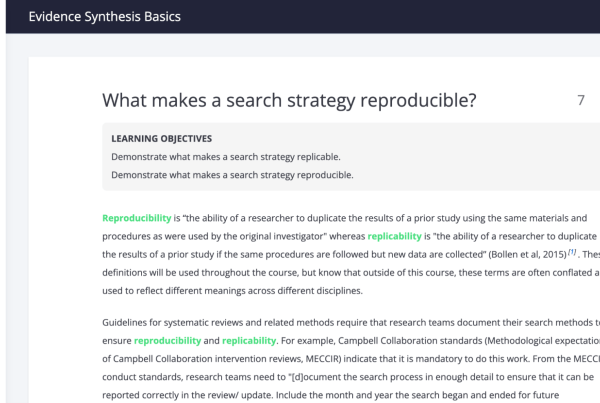By Dr. Marguerite Ragnow, Curator of the James Ford Bell Library
Boeuf bourguignon, blanquette de veau, bouillabaisse. The French have perfected soups and stews. But even their simple recipes are rich and delicious. Like the humble lentil soup, which only has three main ingredients: lentils, carrots, and onions.
This recipe comes from “Recettes” here in the James Ford Bell Library, an anonymous manuscript collection of recipes from 1788. The types of recipes included suggest it was for one of those “families of the first fashion” in 18th-century French society.
Most recipe collections of the time were written by cooks or housekeepers for themselves or other cooks, generally for large household management. Think “Downton Abbey” rather than “Little House on the Prairie.”
The process is straightforward, and the end product is rich and balanced. With winter on the horizon, this lentil soup will surely keep you warm during the darker months.
Ingredients (serves 10-12 for a soup course; 6-8 for a main course)
- 2 lbs of lentilles du Puys or any green lentil
- 1 large or 2 smaller carrots, diced
- 2 medium onions, diced
- ½ tsp whole cloves
- 3-4 bay leaves
- ½ cup (1 stick) of unsalted butter
- 1 tsp salt or more to taste
- ½ tsp pepper or more to taste
Directions
Put the lentils in a 6-7 quart pot and cover with warm water about 3 inches above the level of the lentils. If using lentilles du Puys, you may wish to do this overnight as they are harder to break down. Otherwise soak for four hours, checking after two hours to see if you need to add more liquid. The lentils will almost double in volume, but there still should be about 1-2 cups of water at the bottom of the pot.
Add the carrots and onions to the pot. Place the cloves and bay leaves in cheesecloth and tie up with baking string to make a pouch, or place them in a tea ball. You can put them directly into the pot, but you will need to fish them out later, and this is so much easier. Add the cloves and bay leaves to the pot.
Bring the pot to a boil — make sure there is enough water so that the lentils stay moist and don’t stick to the bottom of the pot. Stir frequently. Once the lentils are hot, turn the temperature down to medium and simmer for 30 minutes, stirring frequently, or until the carrots are soft. There should be almost no water left in the pot.
Let the lentils cool in the pot for about 30 minutes. Purée the lentils with a blender – I used an immersion blender — until they form a rough paste; bits of carrot should still be distinguishable.
In the meantime, bring 3-4 cups of cold water to a boil, and in a small pot or the microwave, melt the butter. Add 3 cups of boiling water to the lentil mixture, adjusting until you get the thickness you prefer.
Stir the melted butter into the soup until it is well blended, add salt and pepper to taste and serve.
This soup is quite delicious — none of the flavors are overpowering. It is reminiscent of a thick pea soup, and with most such dishes, it tastes even better the next day. You may want to add a bit of water when reheating.
A note on weights and measures
In 1788, France used an older set of weights and measures. Using dry measures, 1.5 litres of lentils back then is the equivalent of 2 pounds of lentils today. A quarteron (quartron in the recipe) was a fourth of a livre actuelle, or one-quarter pound. The livre actuelle was a revision of Charlemagne’s 8th-century system, created by King Jean II (1319-1364).
Generally speaking, a livre actuelle (current pound) was the equivalent of our 16 ounces, compared to Charlemagne’s livre esterin (true pound), which was a 12-ounce pound. However, in practice, a livre actuelle could be anywhere from 12 to 18 ounces depending on the region of France.
A note on ingredients
The recipe calls for “Queen’s lentils.” I couldn’t pin this down, but for this recipe I am assuming that they are what we call French lentils from the Puys region of central France, where they have been grown for more than 2,000 years. They are a smaller green lentil with a slightly bluish cast in color, with a nutty, peppery, and slightly flinty taste due to the volcanic soil in which they are grown. They are firmer than common green lentils, which make them perfect for salads and soups in which you want the lentils to hold their shape. Since that’s not the case with this soup, I decided to go with regular green lentils, which are considerably cheaper and more readily available in U.S. grocery stores than lentilles du Puys.
Sticks of cloves are what we usually call whole cloves, which actually are the dried flower buds of the clove tree. Clove trees are native to the Maluku Islands of Indonesia, sometimes referred to in the past as the Spice Islands. Initially traded among the Austronesian peoples beginning around 1500 BCE, archaeologists have found evidence of clove use in Syria circa 1700 BCE and cloves reached the Roman Empire by the 1st century CE. They traveled more widely in Europe, Asia, and Africa during the European Middle Ages. It was a major product of the maritime Silk Road trade route. In this recipe, the cloves make all the difference, adding a necessary depth of flavor; the soup would be quite bland without them.
The recipe books that are part of the Bell Library collection are focused on recipes that include trade goods among their ingredients. Expensive ingredients like the spices clove and cinnamon, recipes that traveled from other parts of the world and referred to as “á la Turque” or “á la Bretagne,” for example, offer insight into the culinary lives of more well-to-do members of early modern society.
The quarter pound of melted butter gives the soup a very creamy, silky texture but does not really add flavor. The soup is perfectly delicious and entirely vegan without it. I didn’t experiment with vegan butter to see if I could achieve the same effect as I thought the soup was lovely on its own.
A note on method
As with many recipes written down by cooks for their own use, this recipe is light on details. For instance, there is no indication as to the amount of cloves to use, how or even if one is to cut up the vegetables, how much water to use, or how long to soak the lentils. The recipe even suggests that you should maybe add the carrots towards the end of the process.
So, I used my 50+ years of cooking experience, and this was the result. And although the recipe says to pass the lentils through a sieve, it proved ridiculously arduous, so after a couple of minutes I pulled out my trusty immersion blender and used it to purée the lentils and vegetables.
Soupe aux Lentilles, Transcription from the original manuscript, 1788
Vous prendres une litre et demi de lentilles que vous feres tremper la veille lar las centres chaudes; le matin vous les faites bouiller dans une petite marmite, vous y mettez deux oignons piquets de clous de girafles, trois ou quatre feuilles de Laurier et une grosse carotte ou deux petites. Lorsque de tout est bien cuit et consommé en passe le tout par un tamis comme les pois, èclaircisses vos lentilles avec de l’eau bouillante pour faire la soupe. Lorsque vous voudres faire votre soupe, vous prendres la Valeur d’un quartron de beure que vous fonderes soux, puis vous y mettrez votre purée et des carottes poivre et sel au gout que l’on veut. Il faut pour cela des lentilles á reine. Lorsqu’on veut en faire ètûver on suivre la même manière que pour ètûver les haricots.
Lentil Soup, English Translation
You take a litre and one half of lentils that that you soak the night before over hot ashes; in the morning, you boil them in a small pot, you put two onions in it, sticks of cloves, three or four bay leaves, and one large carrot or two small ones. When everything is cooked and consumed, pass everything through a sieve as with peas; thin your lentils with boiling water to make the soup. When you want to make your soup, you take the value of a quarter pound of butter which you melt down, then you will put it in your puree and carrots, pepper and salt to taste as you wish. For this you need the Queen’s lentils. When you want to parboil it, follow the same manner as to parboil beans.


